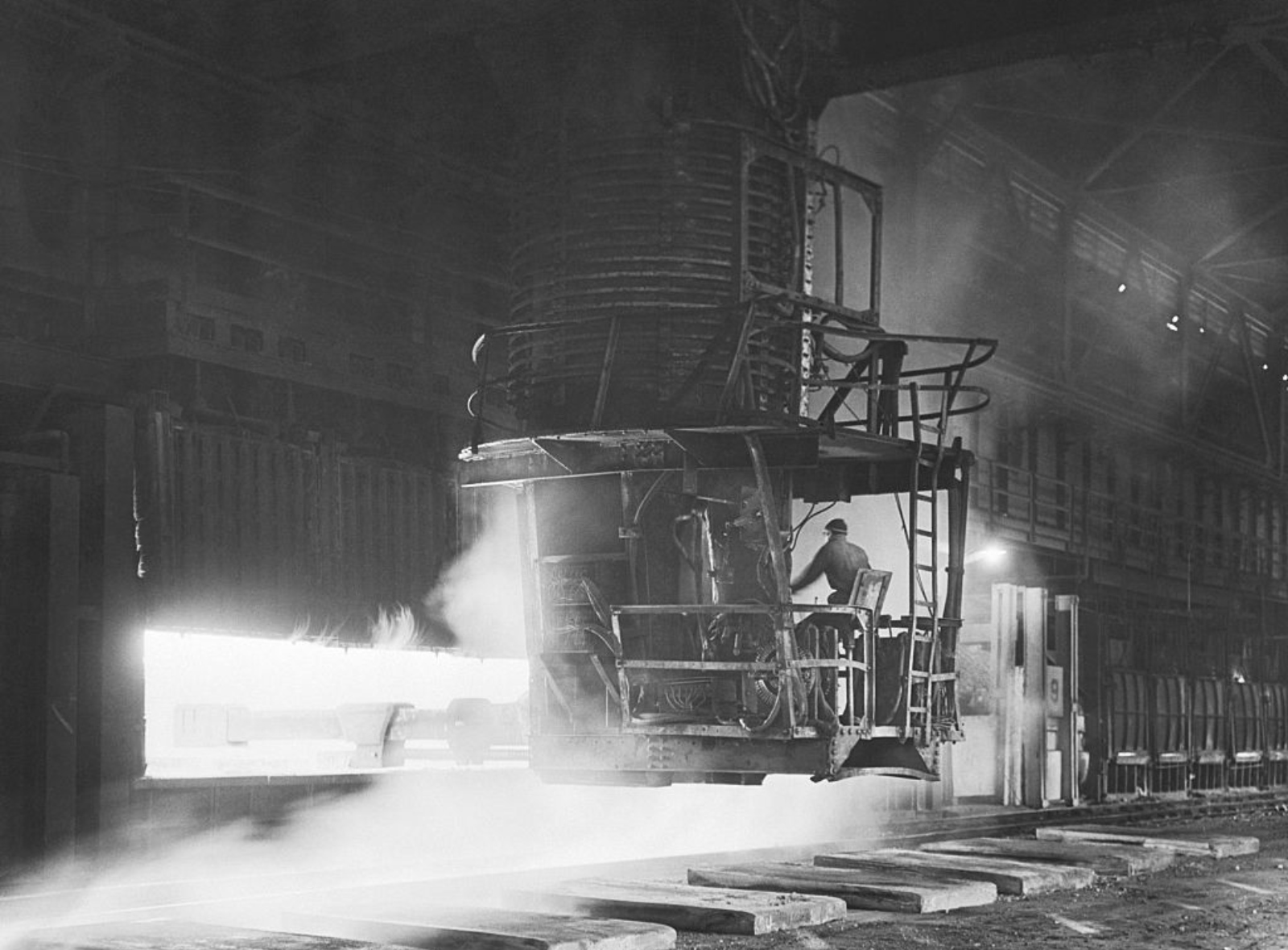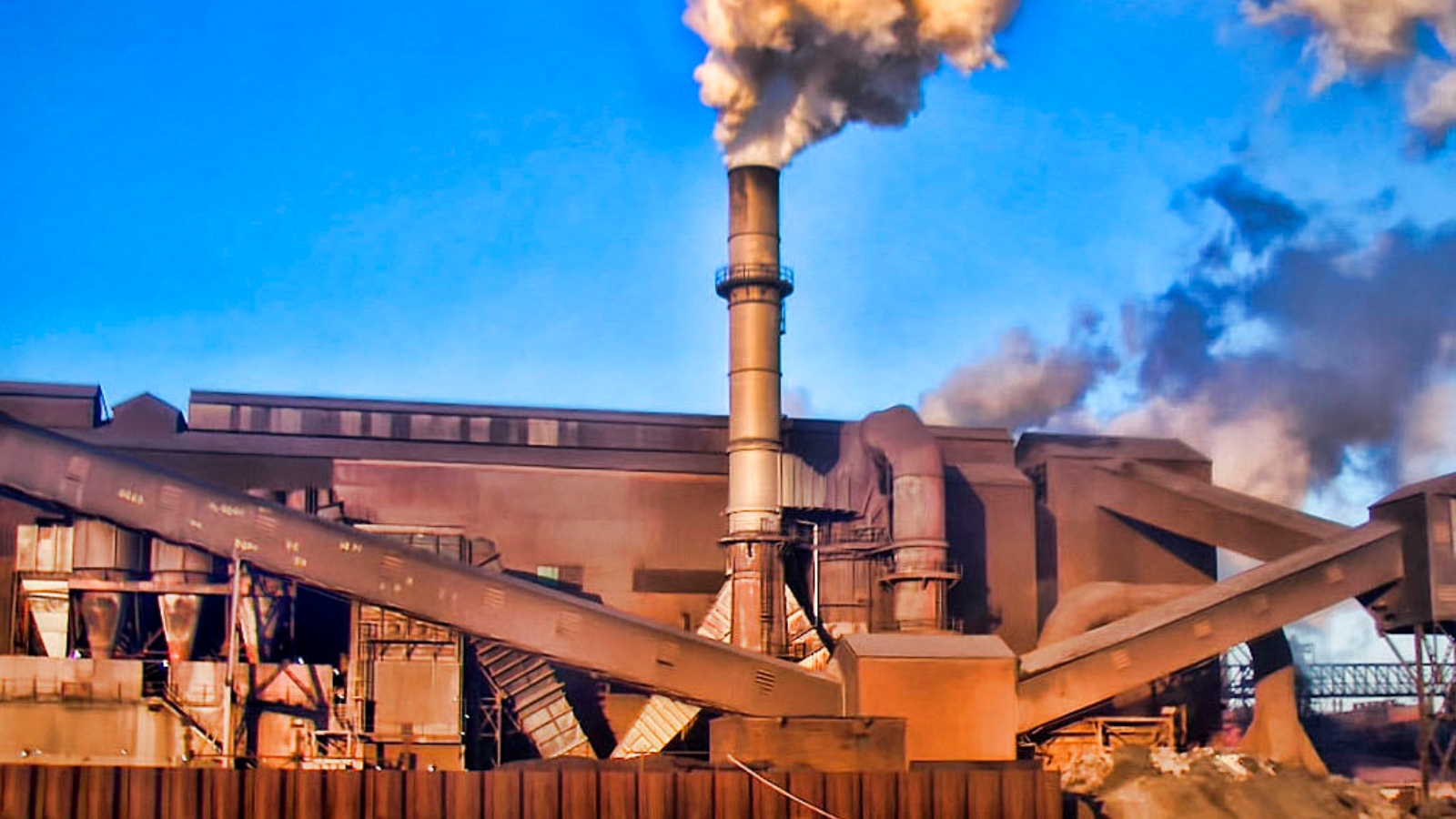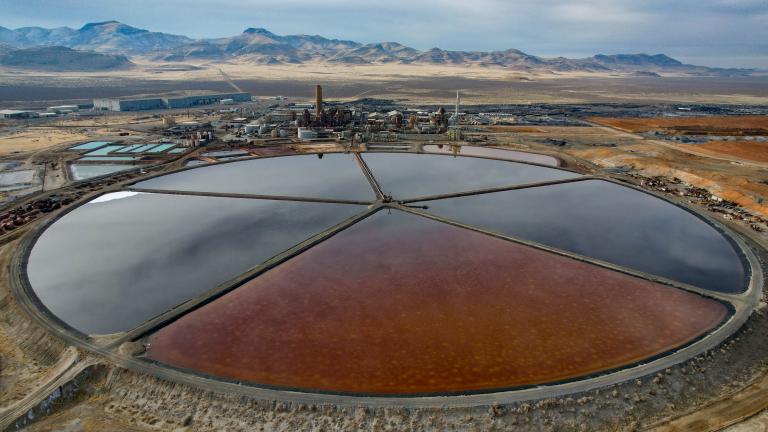Kimmie Gordon remembers the many parents who worked in the steel mills. They were folks like her stepfather, who drove each day to the eastern side of Chicago or to Burns Harbor, Indiana where they toiled in the heat of massive furnaces, burning coal and iron ore to produce steel. The jobs paid well but the work was dirty. A fine layer of black soot seemed to coat everything they owned, even the insides of their lungs.
Gordon didn’t know it when she was growing up in the 1980s, but the pollutants that gathered in the folds of the workers’ clothing was in the air all over Gary, the majority-Black city in northern Indiana where she was raised. Today, the stretch of towns along the state’s border with Illinois is home to four of the country’s highest-polluting steel mills, which together account for 90 percent of the industry’s emissions, dumping hundreds of thousands of pounds of toxic heavy metals like lead and chromium into the air each year.
Earlier this month, the Environmental Protection Agency proposed new rules for steel mills, aiming to cut toxic emissions by 79 tons per year, a 15 percent reduction from current levels, and requiring that U.S. Steel and Cleveland Cliffs, the only two companies operating the country’s 11 steel mills, measure concentrations of cancer-causing chromium along the borders of their sites. The EPA estimates that the new rules would also cut particulate pollution by 500 tons per year.
It’s the first step that the agency has ever taken to reduce emissions from leaks and equipment malfunctions at steel mills and comes after three separate lawsuits over 20 years. Local advocates that Grist spoke to said that the proposed measures, while welcome, are not nearly enough to keep their communities safe. Gary leads the nation in the amount of toxic industrial emissions per square mile.
“The EPA could have done better because we’re in a crisis,” said Gordon, who serves as the director of Brown Faces Green Spaces, a local environmental organization. “This 15 percent reduction means nothing to the people of Gary. Our needle is all the way past the red.”
The city of Gary was built around the steel industry. Once a quiet stretch of dunes on the lower rim of Lake Michigan, the area was transformed over the course of the early 20th century into a bustling mill town. U.S. Steel was the engine of this transformation, leveling hundreds of square miles of dunes and woods to erect mazes of furnaces and industrial ovens that belched black smoke into the air. After the Second World War, many white families moved to the suburbs and factory jobs declined, sowing the seeds of the city’s decline. Today, the population of Gary is 68,000, less than half its 1960 high of 178,000, and nearly a third of residents live in poverty, according to U.S. Census data. The toxic emissions remain.
Producing steel is a highly polluting enterprise that involves burning coal and combining the product, known as coke, with iron ore in a furnace before melting it all down into liquid steel. The chemicals released from this process include heavy metals like lead and arsenic, as well as fine particles that can get lodged inside lungs when inhaled. These pollutants have been linked to different cancers and chronic diseases, and numerous studies have made connections between steel mill emissions and impaired heart and lung function.
Advocates sued the agency after it proposed the first standards for steel mills in 2003, arguing that those rules failed to control the release of carcinogens from several highly polluting types of equipment in facilities. In response, the agency agreed to revisit its proposal, but after years went by without any sign of a revised rule, advocates sued again in 2015. When the EPA produced a new rule in 2020, many residents were disappointed to find that it still did not control for many of the cancer-causing pollutants released by steel mills. They filed a third lawsuit later that year. James Pew, a senior attorney at the environmental nonprofit Earthjustice who litigated all three of these cases, told Grist in an interview that the successive delays in regulation have enabled pollution to pile up in communities near mills, since heavy metals released into the air fall to the earth and accumulate in the soil, exposing residents, generation after generation.
“Their neglect over the last two to three decades has caused enormous harm,” Pew said. “Gary, Indiana has 100 years of lead buildup because the EPA has never done anything about it.”
The EPA previously said it’s not required to develop new emissions standards for unregulated steel mill pollutants, an assertion that was shot down by a federal circuit court in 2020. In an email, an agency spokesperson, Shayla Powell, told Grist that the newly proposed amendments would address regulatory gaps exposed by that court decision.

The rule that the agency proposed on July 12 would limit pollution from five previously unregulated sources within steel mills, like the open pits where the toxic by-products of smelting ore are dumped and the valves through which contaminated air is released to depressurize equipment. Once implemented, the regulations are projected to reduce toxic emissions by 15 percent, from 520 tons per year to 440 tons per year. Pew told Grist that this figure is particularly disappointing because the EPA’s own research indicates that much larger emissions reductions are possible, at a minimal cost to operators.
The EPA projects that the toxic emissions reductions in the proposed rule will cost these two corporations approximately $2.8 million each year to implement, an amount local advocates like Gordon consider paltry. U.S. Steel and Cleveland Cliffs made a combined $44 billion in sales last year.
Amanda Malkowski, a spokesperson for U.S. Steel told Grist in an email that the company was disappointed with the proposal, which would have “exorbitant costs for implementation and provide very little, if any, environmental benefit,” she said. “U.S. Steel is committed to environmental compliance and working with EPA to have regulations that are technologically and economically feasible, while providing an environmental benefit.”
Cleveland Cliffs did not respond to multiple requests for comment.
Roughly half of the emissions from steel production are directed into tall industrial chimneys, while the rest are released at the ground level through pressure valves and cracks in equipment. In a 2019 memo, the EPA estimated that operators could slash 65 percent of this latter set of emissions—190 tons per year in total—simply by implementing more stringent work practice standards. For example, the document cited a century-old protocol that could be used to prevent “slips,” a term referring to the situation in which raw materials fail to descend smoothly into furnaces, leading to high pressure conditions that cause valves to fly open, releasing toxic “dust clouds” into the air. Although the agency determined that slips should not occur more than four times every month, data submitted by mill operators indicates that some plants are averaging more than double that amount.
The proposed rule would require mill operators to set up monitors to measure levels of the toxic heavy metal chromium on the borders of their sites. If concentrations exceed the regulatory “action level,” operations would be required to submit an analysis identifying the cause. Advocates from mill towns told Grist that they appreciated the data collection requirement, but pointed out that steel mills emit over a dozen different toxic chemicals, principally lead, and wondered why the agency was limiting its monitoring efforts to one metal.
“There’s a bunch of things [in the proposal] where it’s like, ‘Oh, you guys did great,’ but there’s so many more chemicals that we’re being exposed to,” said Qiyam Ansari, an environmental advocate in Clairton, Pennsylvania, a small city in the Monongahela River Valley where U.S. Steel operates a mill and a separate coke plant. Since he moved to the valley, he said he’s suffered from asthma attacks that make it difficult to spend time outdoors.
Powell, the EPA spokesperson, told Grist that the agency had collected air samples at four steel mills over a six-month period, and found that lead concentrations were well below the national standard of 0.15 micrograms per cubic meter of air.
The EPA’s own analysis indicates that 27 percent of people living within 3 miles of the country’s operating steel mills are Black, making the pollution an issue of environmental justice, a term that refers to the disproportionate pollution borne by low income people and communities of color across the country. The proportion of Black residents in Gary and Clairton are 78 percent and 41 percent, respectively, much higher than the roughly 14 percent share of the U.S. population.
It could take years before the proposed rule takes effect. Once it’s posted in the Federal Register, the EPA will accept written comments from the public for 60 days. The agency is then required to consider the comments and update the rules based on feedback before finalizing them. Along the way, it may face legal challenges from advocates or industry groups.
In May, Adam Ortiz, the EPA administrator for the mid-Atlantic region, which includes Pennsylvania, traveled to Clairton to listen to residents’ concerns about pollution from steel production. Ansari said that after reviewing the details of the agency’s newly proposed standards, he believes that little will come of Ortiz’s visit.
“I’m continuously disappointed and lose my faith in our regulators the more I do this work,” he said.




